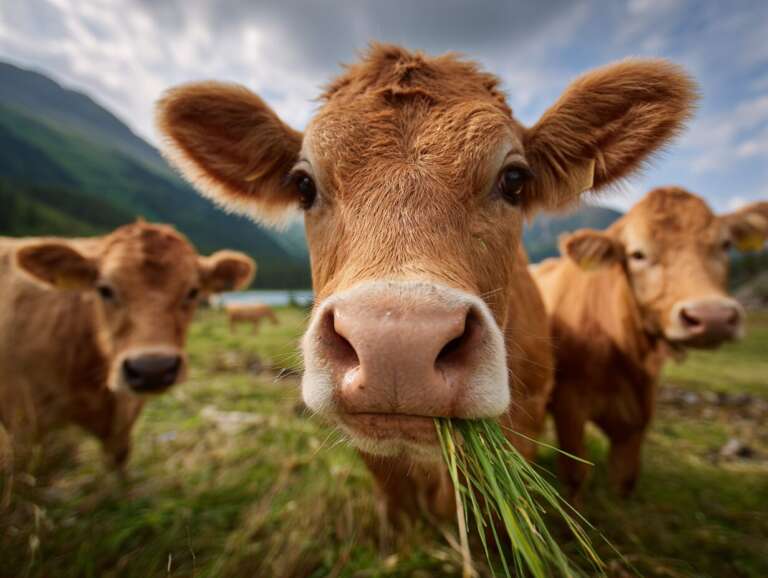Did you know that cattle farming is responsible for a staggering 14.5% of global greenhouse gas emissions? That’s right—while you might think of cars and factories as the primary culprits of climate change, livestock production, particularly cattle, plays a monumental role in our planet’s warming crisis. As the climate clock ticks down, understanding the intricate relationship between livestock and carbon output is more crucial than ever. In this article, we’ll dive deep into how cattle farming impacts our climate, the innovative steps being taken to reduce emissions, and what you can do to make a meaningful difference.
TL;DR: Cattle farming is a major contributor to CO2 emissions, significantly impacting climate change. Sustainable practices and emission reduction strategies are essential for mitigating this impact. Individuals can contribute to sustainability through dietary choices and supporting eco-friendly farming.
Understanding CO2 Livestock Emissions: The Facts
Let’s get straight to the numbers: livestock farming accounts for nearly 80% of the world’s agricultural greenhouse gas emissions. Among these, cattle are the biggest offenders, emitting more CO2 than sheep, goats, and pigs combined. In fact, the Food and Agriculture Organization (FAO) estimates that cattle alone contribute to about 65% of the livestock sector’s emissions. To put this into perspective, the emissions from cattle farming surpass those produced by the entire global transportation sector. Yes, you read that right—cattle farming is a larger contributor to climate change than all the cars, trucks, and planes combined!
But why is this happening? The answer lies in the biological processes of cattle and the vast resources required to raise them. As we explore further, you’ll see how these emissions are not just numbers; they represent a significant threat to our planet’s future.
The Science Behind Cattle Farming and Carbon Production
Here’s the brutal truth: cattle are carbon factories. The digestion process in cattle produces CO2 and methane, a greenhouse gas that’s over 25 times more potent than CO2 over a 100-year period. When cattle digest their feed, they release methane through belching, which is a major contributor to the greenhouse effect. This is where the carbon cycle gets complicated. The feed they consume—often corn and soy—requires extensive land use, which leads to deforestation and further CO2 emissions.
Moreover, the land used for grazing and growing feed crops contributes to soil degradation and loss of biodiversity. It’s a vicious cycle: the more land we clear for cattle farming, the more CO2 we release into the atmosphere. Understanding this cycle is crucial if we want to tackle the issue of CO2 livestock emissions head-on.
Emission Reduction Strategies in Cattle Farming
So, what’s being done about it? Here’s the good news: the cattle farming industry is waking up to its environmental responsibilities. Innovative practices are emerging that promise to reduce emissions significantly. For instance, rotational grazing allows herds to graze on a specific area for a limited time, giving the land a chance to recover and sequester carbon. This not only improves soil health but also reduces the need for chemical fertilizers, which are another source of CO2 emissions.
Technological innovations are also making waves. Methane-reducing feed additives, such as seaweed, have shown promise in cutting methane emissions by up to 80%. Additionally, policy initiatives are being implemented worldwide to regulate emissions and promote sustainable practices. Countries like New Zealand are leading the charge with carbon pricing for farmers, incentivizing them to adopt greener methods.
These strategies are not just theoretical; farms around the world are successfully implementing them, proving that emission reduction is not only possible but profitable. The question is: will the industry as a whole embrace these changes before it’s too late?
Consumer Choices: How Diet Affects CO2 Emissions
Here’s what most people miss: your dinner plate has the power to influence CO2 livestock emissions. The impact of beef consumption on our carbon footprint is staggering. For every pound of beef produced, approximately 27 kilograms of CO2 are emitted. In contrast, plant-based foods like lentils or chickpeas produce a fraction of that—around 0.9 kilograms per pound.
You have a choice. By opting for plant-based diets or supporting sustainably raised meat, you can directly reduce the demand for high-emission cattle farming. The power of consumer demand is immense. When you choose to buy from farms that prioritize sustainability, you send a clear message to the industry: we want change.
The Future of Cattle Farming: Innovations and Sustainability
What does the future hold for cattle farming? The landscape is shifting, and it’s exciting. Regenerative agriculture is gaining traction, focusing on practices that restore soil health and sequester carbon. Farmers are increasingly adopting carbon credits, allowing them to earn income for their sustainable practices while contributing to global emission reduction goals.
Moreover, consumer awareness and activism are driving change in the industry. As more people become educated about the environmental impact of their food choices, the demand for sustainable practices will only grow. This is not just a trend; it’s a movement towards a more sustainable future for cattle farming.
Conclusion
The impact of CO2 livestock emissions is profound and far-reaching, affecting not just the environment but our health and future. By understanding the complexities of cattle farming and its contributions to climate change, we can take actionable steps towards reducing our carbon footprint.
So, what can you do? Start by evaluating your dietary choices and supporting sustainable farming practices. Every small action counts. Join the conversation: share your thoughts on cattle farming and emissions in the comments below, and explore related articles on sustainability and climate change. Together, we can make a difference.

